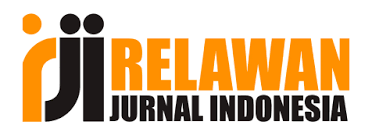Markovian Queueing Models with Scheduled Arrival Patterns: The Optimal Model for Public Transportation
Abstract
This study introduces a Markovian queuing model with scheduled arrival patterns to improve the evaluation and optimization of public transportation systems. While traditional models often overlook the variability in passenger demand throughout the day, this research addresses this gap by incorporating scheduled arrival dynamics that better reflect real-world scenarios at bus stops and train stations. The model employs Markovian equations and simulation methods to analyze the impact of arrival schedules on passenger flow and capacity management. Results demonstrate that the model effectively predicts congestion levels, optimizes service intervals, and improves overall system responsiveness. These findings offer actionable insights for transit planners and policymakers to enhance scheduling strategies, resource allocation, and passenger satisfaction, particularly during peak hours. This work provides a valuable framework for improving urban transit efficiency and reliability.
References
[2] D. Gross and C. M. Harris, Fundamentals of Queueing Theory. John Wiley & Sons, 1998.
[3] J. Medhi, Stochastic Models in Queueing Theory. Academic Press, 2002.
[4] G. F. Newell, Applications of Queueing Theory. Chapman and Hall, 1982.
[5] E. E. Osuna and G. F. Newell, "Control Strategies for an Idealized Public Transportation System," Transportation Science, vol. 6, no. 1, pp. 52–72, 1972.
[6] H. A. Taha, Operations Research: An Introduction. Pearson Prentice Hall, 2006.
[7] V. R. Vuchic, Urban Transit: Operations, Planning, and Economics. John Wiley & Sons, 2005.
[8] N. H. Wilson, Scheduling and Control of Public Transport Systems. MIT Press, 1981.
[9] D. F. Silva, A. Vinel, and B. Kirkici, "On-Demand Public Transit: A Markovian Continuous Approximation Model," Transportation Science, vol. 56, no. 3, pp. 704–724, 2022.
[10] G. V. K. Reddy and R. Anitha, "Markovian Bulk Service Queue with Delayed Vacations," Computers & Operations Research, vol. 25, no. 12, pp. 1159–1166, 1998.
[11] Q. Yang, Y. Fan, Y. Li, and J. Zhou, "Modeling and Uncovering the Passenger–Taxi Dynamic Queues at Taxi Stations with Multiple Boarding Points Using a Markovian Environment," Physica A: Statistical Mechanics and Its Applications, vol. 572, p. 125870, 2021.
[12] M. D. Peterson, D. J. Bertsimas, and A. R. Odoni, "Models and Algorithms for Transient Queueing Congestion at Airports," Management Science, vol. 41, no. 8, pp. 1279–1295, 1995.
[13] A. S. Alfa and M. F. Neuts, "Modeling Vehicular Traffic Using the Discrete Time Markovian Arrival Process," Transportation Science, vol. 29, no. 2, pp. 109–117, 1995.
[14] Q.-L. Li, R.-N. Fan, and Z.-Y. Qian, "A Nonlinear Solution to Closed Queueing Networks for Bike Sharing Systems with Markovian Arrival Processes and Under an Irreducible Path Graph," in Queueing Theory and Network Applications: 12th International Conference, QTNA 2017, Proceedings, Springer, 2017, pp. 134–144.
[15] E. Almehdawe, B. Jewkes, and Q.-M. He, "A Markovian Queueing Model for Ambulance Offload Delays," European Journal of Operational Research, vol. 226, no. 3, pp. 602–614, 2013.
[16] R. Haijema and E. M. Hendrix, "Traffic Responsive Control of Intersections with Predicted Arrival Times: A Markovian Approach," Computer‐Aided Civil and Infrastructure Engineering, vol. 29, no. 2, pp. 123–139, 2014.
[17] R. Mehmood and J. A. Lu, "Computational Markovian Analysis of Large Systems," Journal of Manufacturing Technology Management, vol. 22, no. 6, pp. 804–817, 2011.
[18] J. R. Artalejo and A. Gómez-Corral, "Markovian Arrivals in Stochastic Modelling: A Survey and Some New Results," SORT-Statistics and Operations Research Transactions, vol. 34, no. 2, pp. 101–156, 2010.
[19] R. Mehmood, C. Abdullah, and T. Osman, "Exploring the Influence of Big Data on City Transport Operations: A Markovian Approach," International Journal of Operations & Production Management, vol. 37, no. 1, pp. 75–104, 2017.
[20] C. Osorio and J. Yamani, "Analytical and Scalable Analysis of Transient Tandem Markovian Finite Capacity Queueing Networks," Transportation Science, vol. 51, no. 3, pp. 823–840, 2017.
















